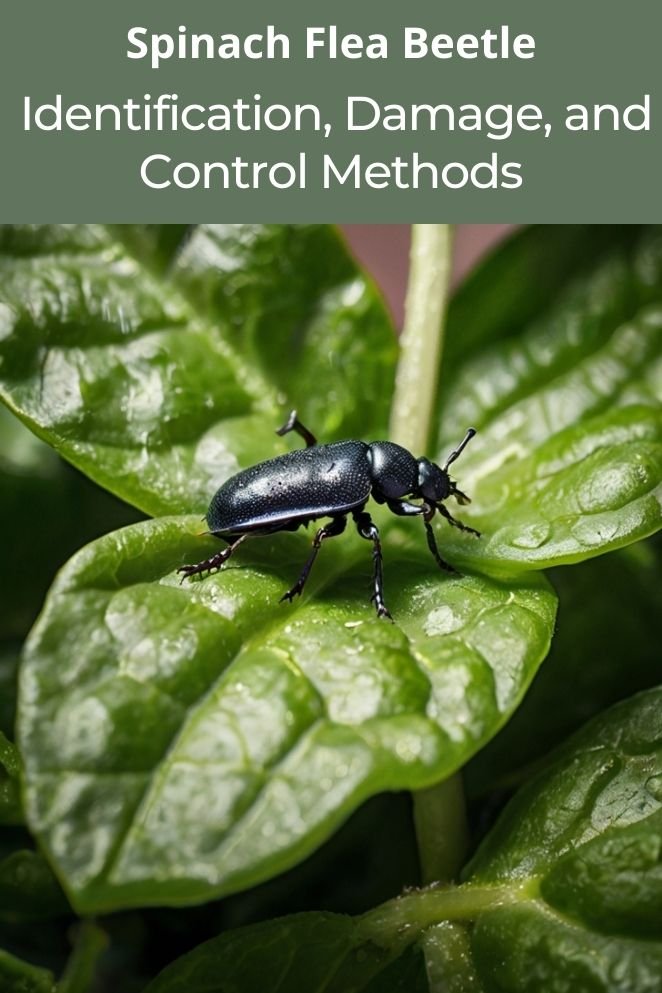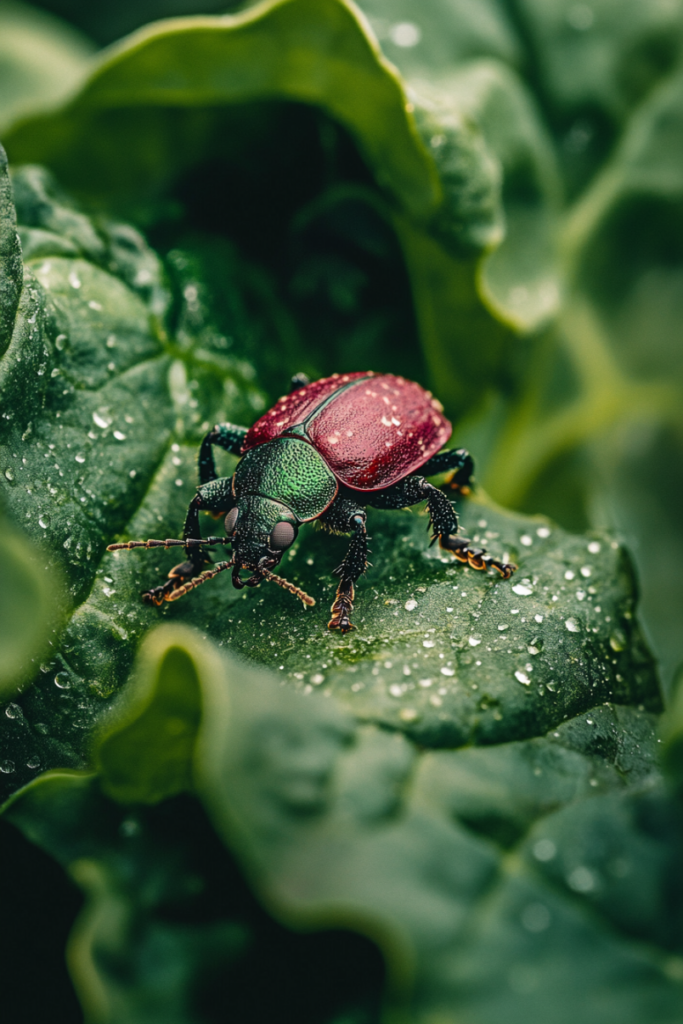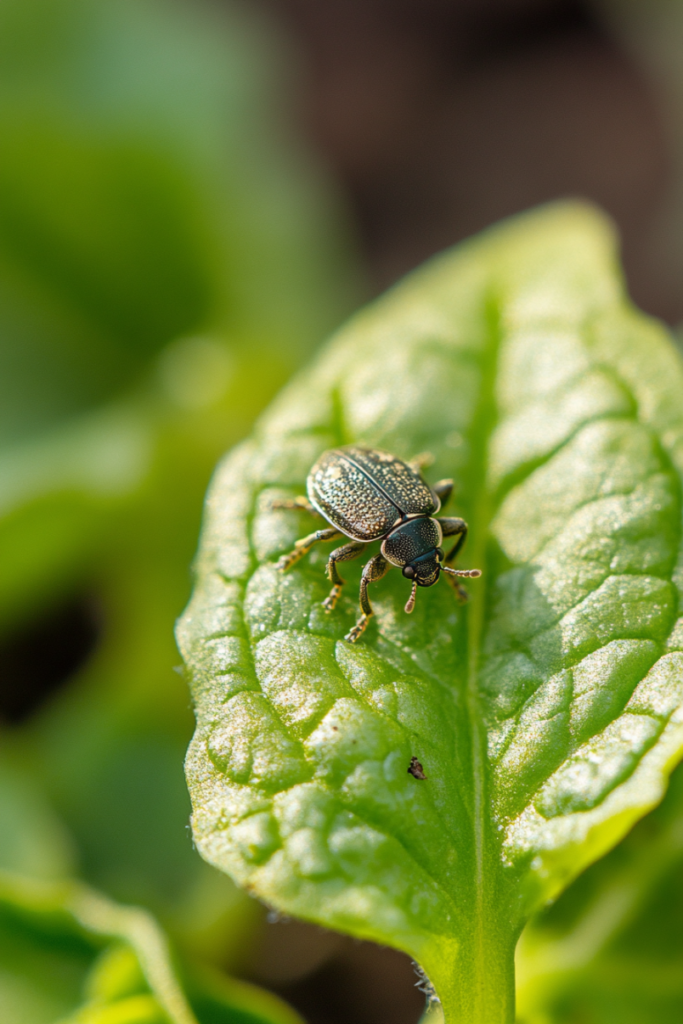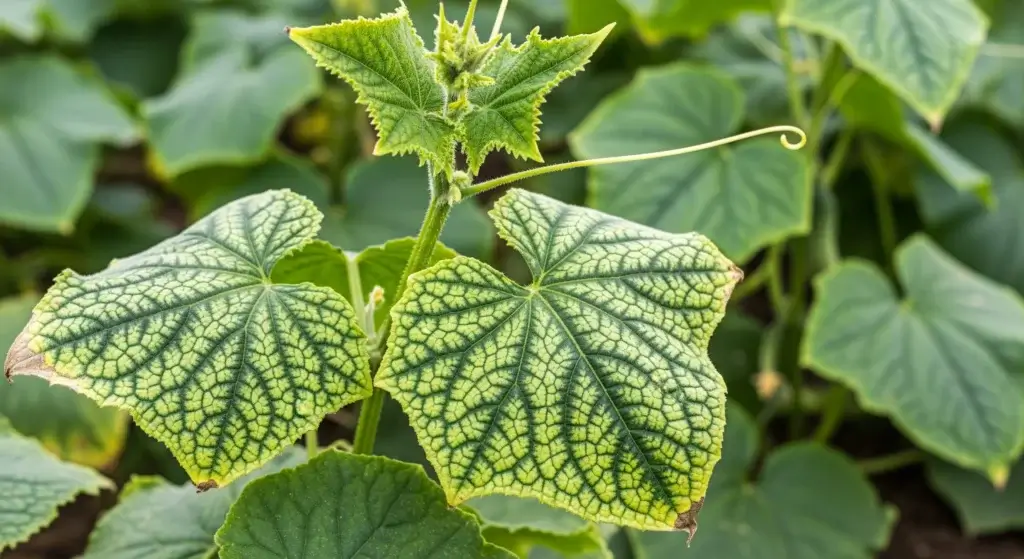
Growing spinach is incredibly rewarding, but like any crop, it faces threats from various pests.
One of the most notorious pests is the spinach flea beetle, a small yet highly destructive insect that can cause significant damage to your plants.
In this guide, we’ll cover everything you need to know about spinach flea beetles, the damage they cause, and how to manage them effectively.
Characteristics of Spinach Flea Beetles
Spinach flea beetles are tiny insects, part of the larger flea beetle family, known for their ability to jump long distances when disturbed, similar to fleas—hence their name.
These beetles are small, about 1/16 to 1/8 inches long, with shiny, dark-colored bodies.
They typically appear in early spring and start feeding on various plants, including spinach, by creating small holes in the leaves.
These beetles can be particularly harmful because they not only damage young plants but also spread plant diseases, making it important to control their presence in your garden.
Flea Beetle Damage on Spinach Plants
Flea beetle damage is easy to identify.
The beetles create tiny, irregular holes in the leaves, which often give the spinach a “shotgun blast” appearance.
The damage caused by these pests can severely stunt plant growth, especially when dealing with seedlings and young plants.
In some cases, the damage can be so severe that plants are unable to recover and die before they can mature.
- Direct damage: The adult beetles chew small holes in the spinach leaves, which can reduce photosynthesis and weaken the plant.
- Secondary damage: By feeding on the plant, flea beetles can also create entry points for diseases, such as bacterial wilt and fungal infections.
In severe infestations, entire crops can be lost if not managed properly.
Studies have shown that yield losses can reach up to 50% when flea beetles are not controlled (Journal of Pest Management, 2021).

Management Strategies
Controlling spinach flea beetles requires a combination of different methods.
Here’s a breakdown of the most effective strategies:
Cultural Controls
Cultural controls involve changing the way you grow your spinach to minimize flea beetle populations.
Here are some proven techniques:
Crop rotation
Flea beetles often lay their eggs in the soil, and if you plant the same crops in the same spot every season, they can easily find the plants again.
By rotating your crops—planting different crops in a new area each season—you can help prevent flea beetles from building up in the soil.
This reduces the chance of infestations coming back year after year.
Row covers
Floating row covers are lightweight fabric barriers that you can place over your spinach plants to physically block flea beetles from reaching them.
These covers need to be put in place early in the season, before the beetles start to appear, to be most effective.
The row covers protect your spinach without affecting sunlight, water, or air from getting to the plants.
Timing your planting
Flea beetles are most active during the spring, so planting your spinach later in the season—like in the fall—may help you avoid their peak activity.
By planting when flea beetles are less active, you can reduce the amount of damage they cause.
Tilling the soil
After you harvest your crops, tilling (turning over) the soil can help expose flea beetle eggs and larvae.
By exposing them to sunlight and air, you can kill many of the larvae before they have a chance to grow into adult beetles, reducing the population for the next season.

Biological Controls
Biological control involves using natural predators and pathogens to control flea beetle populations.
Some options include:
Beneficial nematodes
These are tiny, microscopic organisms that live in the soil and attack flea beetle larvae.
They enter the larvae’s bodies, releasing bacteria that kill them.
You can apply nematodes to the soil around your spinach plants, and they’ll help reduce future generations of flea beetles by eliminating larvae before they turn into adults.
Ladybugs and ground beetles
These insects are natural predators of flea beetle larvae.
By encouraging ladybugs and ground beetles in your garden, you can help keep flea beetle populations under control.
These beneficial bugs are part of a healthy garden ecosystem and can provide long-term pest management by feeding on the larvae.
Beauveria bassiana
This is a type of fungus that specifically targets flea beetles.
When the fungus comes into contact with the beetles, it infects them, causing a disease that eventually kills them.
Beauveria bassiana is available in commercial products that you can spray on infested plants.
It’s a natural way to control flea beetles without harming your plants or other beneficial insects.
Chemical controls
While cultural and biological controls can be very effective, chemical controls may be necessary for severe infestations.
However, it’s essential to use chemicals responsibly to avoid harming beneficial insects and the environment.
Some chemical options include:
Insecticidal soaps
These are a safer option for controlling flea beetles.
The soap kills the beetles on contact without leaving harmful chemicals behind.
For insecticidal soap to work, you need to spray it directly on the beetles, so make sure to cover the spinach leaves thoroughly.
It’s a quick solution but won’t have long-lasting effects once the soap dries.
Neem oil
Neem oil is an organic insecticide that disrupts how flea beetles feed and reproduce, which eventually reduces their population.
It’s safe to use around beneficial insects like bees, making it a good option for regular use during the growing season.
However, neem oil needs to be applied consistently to stay effective.
Pyrethrin
Pyrethrin is a fast-acting insecticide derived from chrysanthemum flowers.
It kills flea beetles quickly and is considered natural.
However, it should be used sparingly because it can also harm helpful insects like ladybugs or bees.
If you choose to use pyrethrin, apply it only when absolutely necessary and try to avoid spraying during times when beneficial insects are active.
Systemic insecticides
These insecticides are absorbed by the spinach plants, making the plants toxic to flea beetles when they feed on them.
While effective for severe infestations, systemic insecticides should be a last resort.
They can have a broader environmental impact, including harming soil health and possibly affecting non-target species.

Integrated Pest Management (IPM)
Integrated Pest Management (IPM) is an approach that combines multiple strategies to control flea beetles effectively while minimizing harm to the environment and non-target species.
This strategy involves:
Monitoring
The first step in IPM is keeping a close eye on your spinach plants.
Regularly inspecting the plants for flea beetles and their damage helps you catch problems early, before they get out of hand.
Threshold levels
IPM is based on the idea of “threshold levels,” meaning you don’t need to act immediately just because you see a few beetles.
Instead, you set a threshold—the point at which the number of flea beetles becomes a real threat to your spinach.
Once the beetles reach that point, it’s time to take action.
Combining methods
One of the strengths of IPM is that it encourages using multiple control methods together.
For example, you might combine cultural methods (like crop rotation or row covers) with biological controls (like beneficial insects) and chemical options (such as insecticidal soaps) to manage flea beetles effectively.
Protecting the environment
By taking this balanced approach, IPM not only controls flea beetles but also helps protect your plants, beneficial insects, and the surrounding ecosystem.
You avoid the overuse of pesticides, which can harm bees, ladybugs, and other helpful species, and you reduce the environmental impact on the soil and water.

Final Thoughts
Spinach flea beetles are a significant threat to spinach crops, but with the right management strategies, you can protect your plants and maintain a healthy garden.
Whether you choose cultural, biological, chemical controls, or an integrated approach, early detection and consistent management are key to keeping these pests at bay.
The key to success is vigilance and adaptability.
Flea beetles are persistent, but so are gardeners!
By using the methods outlined above, you can keep flea beetles from taking over your spinach patch and enjoy a bountiful harvest.
FAQs
Flea beetles are small, dark beetles that jump when disturbed. You’ll often see tiny holes in the leaves of your spinach, giving them a “shotgun” appearance.
Row covers should be applied early in the season, right after planting, to prevent flea beetles from reaching your spinach plants.
Yes, flea beetles can create entry points for bacterial and fungal diseases, making it crucial to control their populations early.
It’s a good idea to check your plants at least once a week, especially during the early growing season when flea beetles are most active.



